HP HPE6-A40 Aruba Certified Mobility Expert 6.4 Online Training
HP HPE6-A40 Online Training
The questions for HPE6-A40 were last updated at Apr 22,2025.
- Exam Code: HPE6-A40
- Exam Name: Aruba Certified Mobility Expert 6.4
- Certification Provider: HP
- Latest update: Apr 22,2025
Refer to the exhibit.
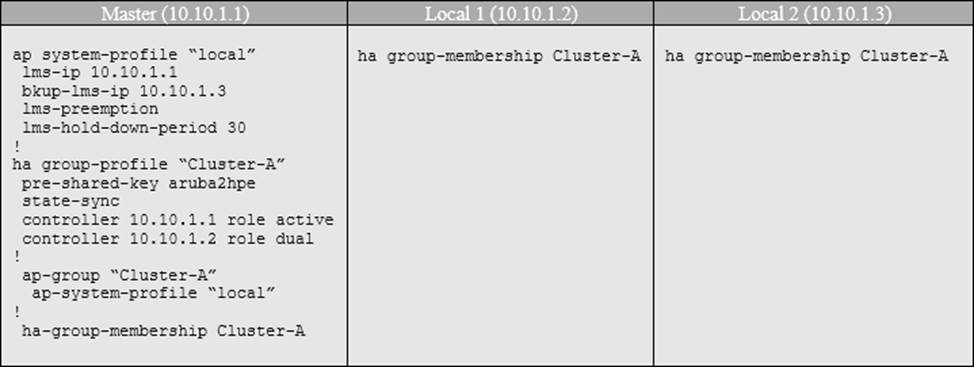
A network engineer reviews the HA redundancy configuration of the Master and Local controllers shown in the exhibit. The engineer notices HA preemption is not enabled.
Which statement are correct? (Choose two.)
- A . The RAPs in the ap-group of Cluster-A can failover to 10.10.1.2 and will start to failback to 10.10.1.1 after 10.10.1.1 is up for 30 seconds.
- B . The CPAs in the ap group of Cluster-A can failover to 10.10.1.2 and will start to failback to 10.10.1.1 after 10.10.1.1 is up for 30 seconds.
- C . The RAPs in the ap-group of Cluster-A can failover to 10.10.1.3 and will start to failback to 10.10.1.1 after 10.10.1.1 is up for 30 seconds.
- D . The CPAs in the ap group of Cluster-A can failover to 10.10.1.2 and will not failback the original controller after 10.10.1.1 is up.
Refer to the exhibits on the tabs.
Exhibit 1

Exhibit 2
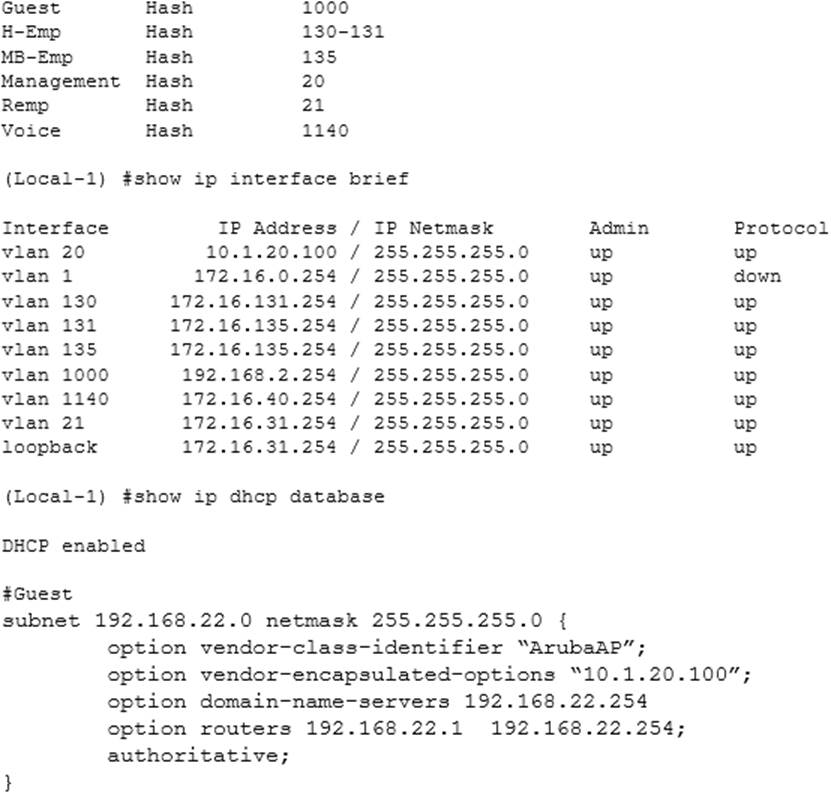
A network support engineer tests the DHCP scopes design for a wireless network. The engineer finds that clients connected to the Guest SSID do not get the IP address from the local controllers DHCP. As per the company policy, guests cannot get the IP from the corporate DHCP.
Based on the information shown in the exhibit, what does the engineer need to do to connect this?
- A . Change the VLAN 1000 subnet mask.
- B . Change port GE0/0/0 to allow VLAN 1000.
- C . Change the VLAN 1000 IP address.
- D . Change the VLAN 1000 name and DHCP pool name so they are the same.
Refer to the exhibit.
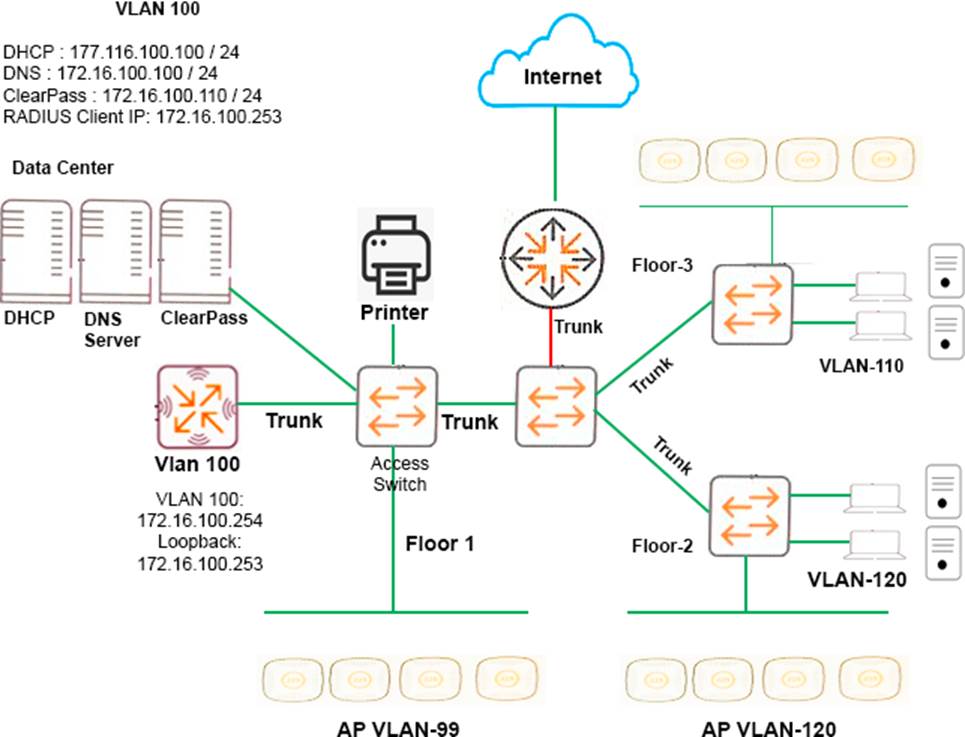
In Aruba architect plans to design a network for a school with a single controller. Wired clients and APs on each floor are mapped to different VLANs. The VLAN mapping is shown in the exhibit. Dot1x authentication is enabled for all the wireless clients, except guests, staff, and student users are mapped to VLAN 200 and 201, respectively. Controller up-link and all other inter switch links are trunk links and allow all necessary VLANs. APs and wired clients are able to get the IP address and other necessary IP parameters. The core switch is doing the inter VLAN routing for the network.
Based on the setup shown in the exhibit, which IP configuration does the controller need? (Choose two.)
- A . RADIUS source interface
- B . IP helper address only on virtual interfaces of VLAN 200 and VLAN 201
- C . Virtual interfaces for all VLAN 101.102.103.200 and 201.
- D . IP helper address on all virtual interfaces of VLAN 101, 102, 103, 200 and 201.
- E . Static route to reach the Data Center.
Refer to the exhibit.
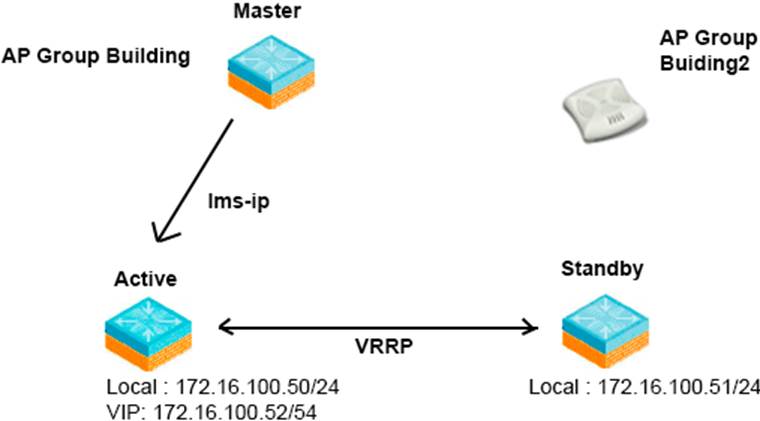
A network is configured with one master controller, one active local controller, and one standby local controller that use VRRP redundancy. All controllers are in the same center. The customer wants to configure AP termination redundancy in the event of controller failure and have the fastest recovery.
How can the network administrator configure the controller for LMS redundancy to meet the customer’s requirements?
- A . Use 172.16.100.50 as the LMS-IP for AP Group Building2 and 172.16.100.51 as the Backup LMS IP.
- B . Use 172.16.100.52 as the LMS-IP for AP Group Building2 and 172.16.100.51 as the Backup LMS IP.
- C . Use 172.16.100.51 as the Backup LMS IP for AP Group Building2.
- D . Use 172.16.100.51 as the Backup LMS IP for AP Group Building2.
An Aruba presales engineer works on a proof of concept (PoC) for a customer. As per the customer requirements, RAPs should be deployed at all home offices of employees who work from home. Only traffic from the RAP incorporate subnets 172.16.10.0/24, 172.168.11.0/24, and 10.254.1.0/8 should reach the controller. The rest of the traffic should be processed by the local resources.
What is the recommended deployment design to meet these requirements?
- A . Deploy the RAP in split-tunnel mode, and use a firewall policy to forward traffic either locally or to the corporate controller.
- B . Deploy the RAP in CAP mode, and use a route map to forward traffic either locally or to the corporate controller.
- C . Deploy the RAP in split-tunnel mode, and use a route map to forward traffic either locally or to the corporate controller.
- D . Deploy the RAP in split-tunnel mode, and use the split tunnel networks to forward traffic either locally or to the corporate controller.
Refer to the exhibit.
![]()
The ap spectrum local-override command is issued at the controller CLI, as shown in the exhibit.
What happens as a result?
- A . All APs in the ap-group will be in spectrum mode on the 2.4GHZ and 5GHZ radios.
- B . All APs in the ap-group will be in spectrum mode on the 5GHZ radio.
- C . The AP225-1 will be in spectrum mode on the 5GHz radio.
- D . The AP225-1 will be in spectrum mode on the 2.4GHz radio.
Refer to the exhibit.
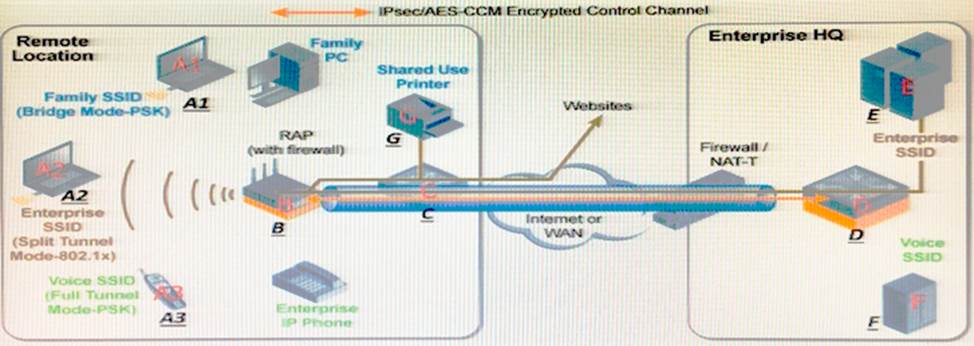
A customer configures three different SSIDs with three different forwarding modes on a Remote AP (RAPB). Client A1 connects to the Family SSID, which is in bridge-mode. Client A2 connects to the Enterprise 801.1X SSID, which is in split-tunnel mode. Client A3 connects to the Voice PSK SSID, which is in tunnel mode.
In which location is the 802.11 encryption terminated and the traffic decrypted for Clients A1, A2, A3?
- A . Client A1 traffic is at C; Client A2 is at B; Client A3 is at B.
- B . Client A1 traffic is at B; Client A2 is at B; Client A3 is at D.
- C . Client A1 traffic is at B; Client A2 is at D; Client A3 is at D.
- D . Client A1 traffic is at B; Client A2 is at D; Client A3 is at B.
A network engineer deploys LMS IP and Backup LMS IP technology in a master-local cluster.
Which processes can occur with this configuration? (Choose two.)
- A . AP bootstraps to connect to the backup LMS when the primary LMS becomes unavailable.
- B . AP switches to the backup LMS controller, which does not need to be in same subnet with the primary LMS.
- C . If the LMS preemption function is not set, the AP fails back to the primary LMS in one minute once the primary LMS becomes available.
- D . AP reboots to connect to the backup LMS when the primary LMS becomes unavailable.
- E . AP established two GRE tunnels with the primary LMS and the backup LMS controller at the same time.
How is AP redirected to a local controller after the DNS resolution returns the master controller IP address?
- A . The AP provides the AP name to the controller from the environment variables, and the master controller returns the AP Group. The AP uses the controller-ip attribute that is set in AP Provisioning.
- B . The master controller provides the AP Group based upon the AP name, and the AP uses the AP Group controller-ip attribute.
- C . The master controller provides the AP Group to the AP, and the AP uses the LMS-IP from the AP-System profile configured for the AP Group.
- D . The master controller provides the LMS-IP from the AP Group, and the AP uses the LMS-IP that is set in the AP Provisioning based upon the AP Group.
Review to the exhibits on the tabs.
Exhibit 1
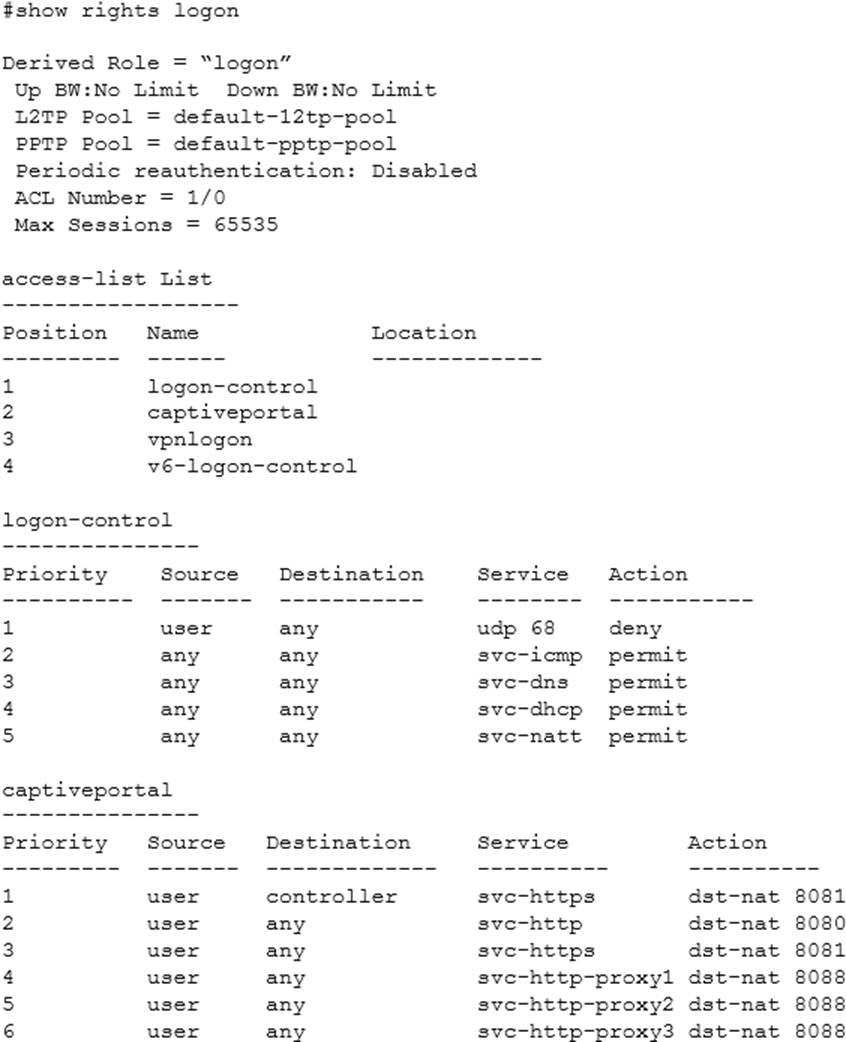
Exhibit 2
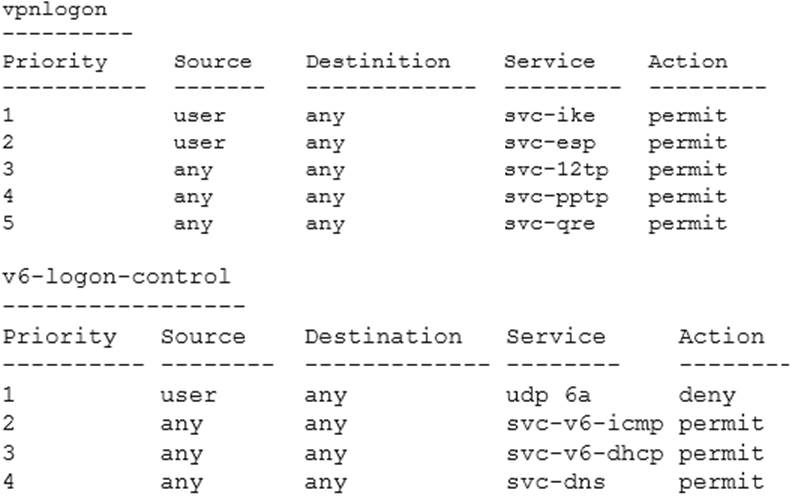
The exhibit shows truncated output from an Aruba controller. An unauthenticated user assigned to the logon role attempts to start n HTTP session to IP address 172.16.43.170.
What happens?
- A . The user’s traffic is passed to the IP address 172.16.43.170 because of the policy statement user any svc-httpsp dst-nat 8081.
- B . The user’s traffic is passed to the IP address 172.16.43.170 because of the policy statement: user any svc-http dst-nat 8080.
- C . The user’s traffic is passed to the IP address 172.16.43.170 because of the policy statement: user any svc-http proxy1 dst-nat 8080.
- D . The user will not reach the IP address 172.16.43.170 because of the policy statement: user any svchttp dst-nat 8080.
Latest HPE6-A40 Dumps Valid Version with 60 Q&As
Latest And Valid Q&A | Instant Download | Once Fail, Full Refund

